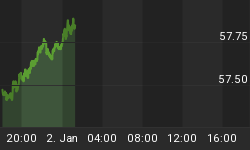On October 3rd, 1942, Germany’s V-2 A4 rocket became the first-ever man-made object to reach space. 15 years and one day later, the Sovie Union launched Sputnik into space, the first satellite. Then, after more than a decade’s wait, the Cold War-fueled space race saw Apollo 11 successfully send humanity to the moon. Now, in 2020, space has once again captured our imagination and multiple entrepreneurs are attempting to launch space tourism as a legitimate industry. Today, SpaceX will take a large step towards that goal when it becomes the first private company to launch astronauts up to the International Space Station. But in a world that has become obsessed with controlling its carbon footprint, the jump from NASA-funded space missions to tourism is a significant one.
@NASA and @SpaceX ready to make history once again! https://t.co/CSGH1I2LDP
— OilPrice.com (@OilandEnergy) May 27, 2020
Launching a rocket out of the atmosphere is not only an amazing feat of human engineering, but it is also an incredibly energy-intensive process. In order to break into space, the rocket, the fuel it’s carrying, and its payload have to counter both gravity and wind resistance. And while you may expect modern rockets to be able to do so more efficiently, the size of the payloads we are now attempting to send to the final frontier is growing exponentially.
Heavy-lift launch vehicles are the latest craze in the space race, from Space X’s ‘Falcon Heavy’, to the United Launch Alliance’s ‘Vulcan’, and Blue Origin’s ‘New Glenn’. These new rockets will eventually aim to send tourists into space. To do so, these companies are creating machines to rival the largest rocket ever made.
The title for largest rocket ever made is still held by Saturn V, a 363-foot rocket with a thrust of 7.6 million pounds that successfully sent astronauts to the moon on the Apollo missions. It also holds the record for the largest payload ever sent into low earth orbit (LEO) at 260,000 pounds. The Falcon Heavy, which famously launched a Tesla Roadster into space in February 2018, has a maximum payload of 140,700 pounds. The major difference for the Falcon Heavy is that it is a reusable rocket and so its cost per launch is dramatically lower.
Related: COVID-19 Is A Hacker’s Paradise
But while the cost of flights may well be falling, the physics of sending a rocket beyond our atmosphere remains the same. So let’s look into the numbers for tomorrow’s launch of the Crew Dragon, which will be launched with a Falcon 9 rather than Falcon heavy. By the time it has reached orbit, the Falcon 9 will have burned through 112,184 kilograms of Rocket Propellant 1 fuel. Each kilogram of that fuel releases 3 kg of CO2, meaning 336,552 kg of CO2 released into the atmosphere. That makes the carbon footprint of today's record-breaking launch only slightly larger than that of a Boeing 747 flying from New York to London. The major difference, of course, is that it will only take about 12 minutes for the astronauts to reach LEO as opposed to the 7 and a half hours a flight from London to New York takes.
Interestingly, Virgin Galactic claims that the carbon footprint of its passengers will be in line with that of a transatlantic business-class customer as its rockets will only burn for 60 seconds and its spaceships will be able to fly hundreds of times. ArianeGroup is even working on a carbon-neutral rocket that will run on methane produced from biomass. But currently, those rockets that have successfully launched are still burning through huge amounts of fuel.
It seems that the dream of economically and environmentally feasible space tourism is still lightyears away, but tomorrow’s launch may bring us one step closer.
More Top Reads From Safehaven.com:
















